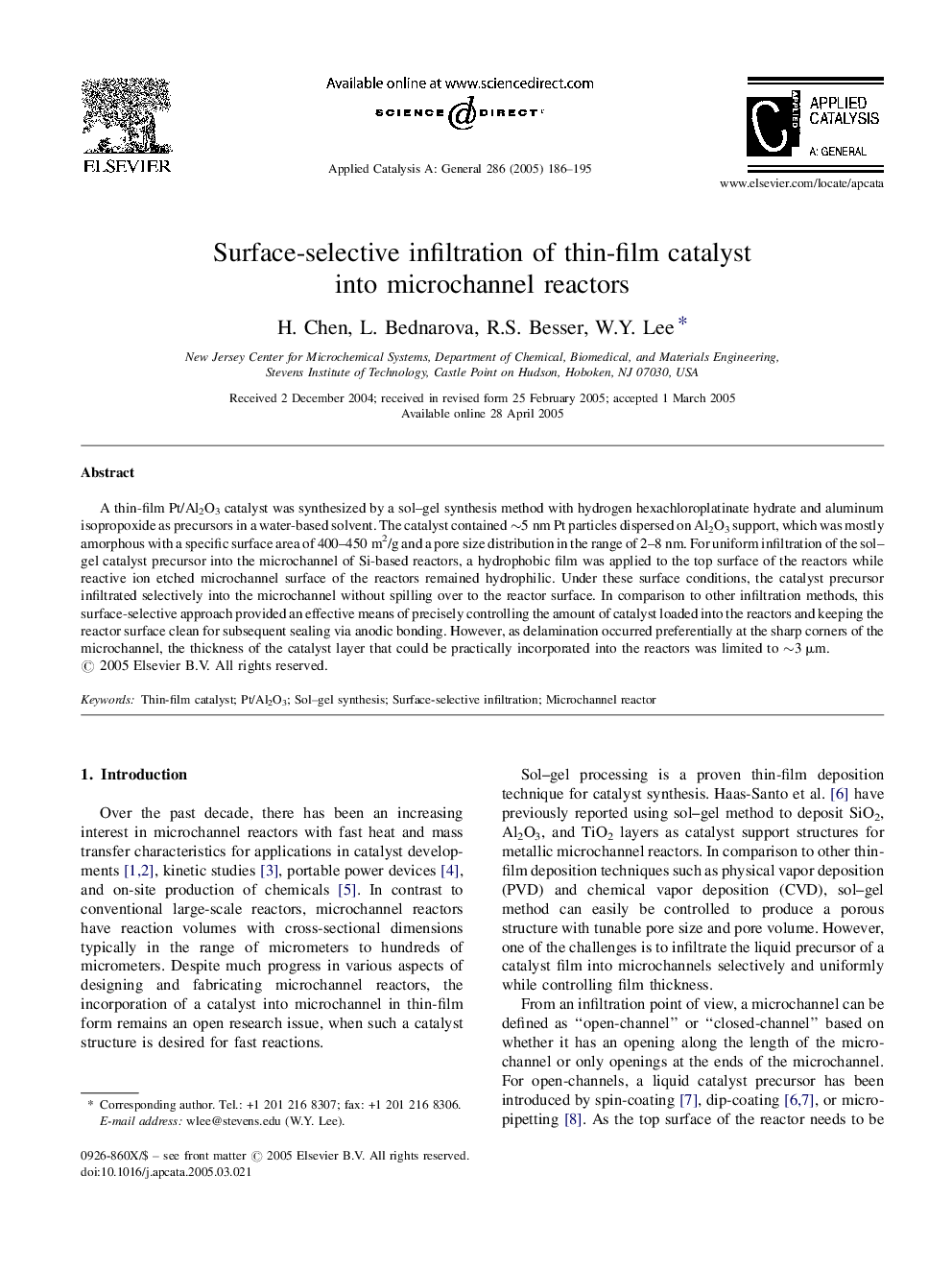| Article ID | Journal | Published Year | Pages | File Type |
|---|---|---|---|---|
| 10239122 | Applied Catalysis A: General | 2005 | 10 Pages |
Abstract
A thin-film Pt/Al2O3 catalyst was synthesized by a sol-gel synthesis method with hydrogen hexachloroplatinate hydrate and aluminum isopropoxide as precursors in a water-based solvent. The catalyst contained â¼5 nm Pt particles dispersed on Al2O3 support, which was mostly amorphous with a specific surface area of 400-450 m2/g and a pore size distribution in the range of 2-8 nm. For uniform infiltration of the sol-gel catalyst precursor into the microchannel of Si-based reactors, a hydrophobic film was applied to the top surface of the reactors while reactive ion etched microchannel surface of the reactors remained hydrophilic. Under these surface conditions, the catalyst precursor infiltrated selectively into the microchannel without spilling over to the reactor surface. In comparison to other infiltration methods, this surface-selective approach provided an effective means of precisely controlling the amount of catalyst loaded into the reactors and keeping the reactor surface clean for subsequent sealing via anodic bonding. However, as delamination occurred preferentially at the sharp corners of the microchannel, the thickness of the catalyst layer that could be practically incorporated into the reactors was limited to â¼3 μm.
Related Topics
Physical Sciences and Engineering
Chemical Engineering
Catalysis
Authors
H. Chen, L. Bednarova, R.S. Besser, W.Y. Lee,
